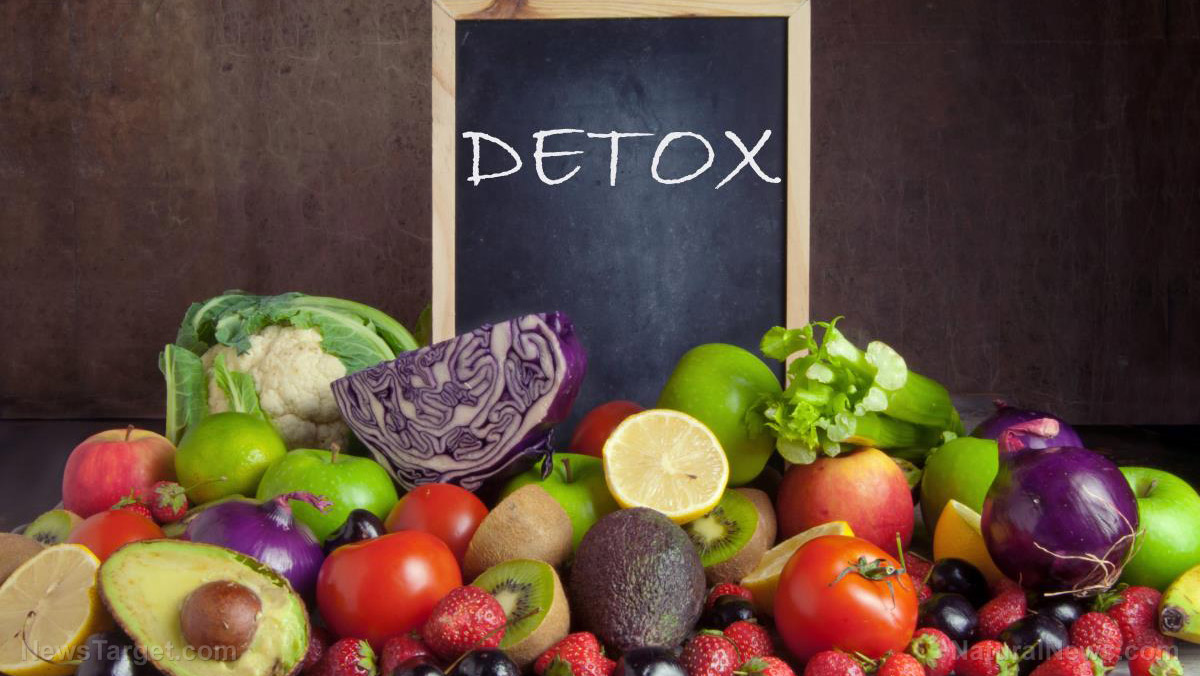Not getting enough vitamin D raises your risk of developing multiple diseases
03/23/2023 / By Olivia Cook

Vitamin D is both a nutrient people eat and a hormone human bodies make in response to sun exposure. You can get it naturally from the flesh of fatty fish and fish liver oils, egg yolks, cheese, beef liver and certain mushrooms.
It is a fat-soluble vitamin that has long been known to help the body absorb and retain calcium and phosphorus – essential minerals that are critical for building bone. Vitamin D strengthens your guard against viruses and germs, reduces inflammation and lowers the risk of cancer. (Related: 3 Key health benefits of vitamin D, the sunshine vitamin.)
An article published by Everyday Health reported that not getting enough vitamin D may raise your risk of developing certain conditions and diseases, including loss of muscle strength, breast cancer, cognitive decline, dementia, depression, diabetes, heart disease, osteoporosis, prostate cancer, respiratory illnesses and infections, schizophrenia, severe erectile dysfunction and Type 2 diabetes.
About a billion people are not getting “true vitamin D sufficiency”
You get vitamin D from certain food, sunshine and dietary supplements, yet vitamin D deficiency is a common global issue. Doctors say about a billion people worldwide are not getting “true vitamin D sufficiency” in their blood. In the United States, about 35 percent of adults have been found to be vitamin D deficient.
Before your body can use vitamin D, your liver must change it into another form called 25 hydroxyvitamin D, or 25(OH)D. Your kidneys use 25(OH)D to make “active vitamin D,” which lets your body use calcium to build bone and help other cells work properly.
The serum concentration of 25(OH)D, also referred to as the cholecalciferol test, ergocalciferol test, vitamin D2 test and vitamin D3 test, is currently the most accurate way to measure how much vitamin D is in your blood so you can treat it with supplements, according to the Vitamin D Fact Sheet for Health Professionals published by the Office of Dietary Supplements at the National Institutes of Health (NIH).
Doctors may request a 25 (OH)D test to monitor vitamin D insufficiency (a mild decrease), vitamin D deficiency (a greater decrease) or vitamin D toxicity or hypervitaminosis D, which is a rare but potentially serious condition that occurs when you have excessive amounts of this vitamin in your body.
Those who are at high risk include:
Babies who are exclusively breastfeeding. While breast milk is the best source of nutrients for babies, it likely won’t provide enough vitamin D so their bodies can absorb calcium and phosphorus. (Related: Up to 95 percent of infants are vitamin D deficient but only 1 percent get vitamin D supplements.)
People (of all ages) who don’t get much exposure to the sun. When your skin is exposed to sunlight, it manufactures vitamin D. The sun’s ultraviolet B (UVB) rays interact with a protein called 7-DHC in the skins, converting it into vitamin D3, the active form of vitamin D.
People (regardless of age) who are obese. Since vitamin D is fat-soluble, people with higher amounts of body fat will “sequester” vitamin D in fat cells, leading to lower amounts circulating in the blood.
Older adults. Older people are prone to develop vitamin D deficiency because of various risk factors, such as decreased dietary intake, diminished sunlight exposure, impaired intestinal absorption, impaired hydroxylation in the liver and kidneys and reduced skin thickness, according to a study published in The American Journal of Clinical Nutrition.
People who have a disease that affects the intestines. These include people with Crohn’s disease, pancreatic enzyme insufficiency, untreated celiac disease and those who have had certain sections of their bowel removed.
People who have dark skin. People with darker skin pigmentation are at a greater risk for vitamin D deficiency or insufficiency because the high presence of melanin in their skin reduces their ability to produce vitamin D, as explained in a study published in the journal Dermatology.
Your doctor may also want you to take a 24 (OH)D test if you’ve already been diagnosed with vitamin D deficiency to see if the treatment prescribed is working.
You will be instructed not to eat anything for four to eight hours before the blood test, which usually takes less than five minutes. A healthcare professional will take a blood sample from a vein in your arm using a small needle. A quick finger prick will more likely provide enough for a blood sample in children and infants.
Learn more about essential vitamins like vitamin D at Nutrients.news.
Watch this video to learn more about vitamin D benefits and deficiency symptoms.
This video is from the Holistic Herbalist channel on Brighteon.com.
More related stories:
Vitamin D myths, facts and statistics.
Vitamin D deficiency increases spread of disease.
How scientists discovered the benefits of vitamin D and why getting enough of it can save your life.
Sources include:
Submit a correction >>
Tagged Under:
25 (OH)D test, disease causes, health science, hypervitaminosis D, men's health, Nutrient, research, sunshine vitamin, supplements, vitamin D, vitamin D deficiency, women's health
This article may contain statements that reflect the opinion of the author
RECENT NEWS & ARTICLES
COPYRIGHT © 2017 SUPPLEMENTS REPORT




















